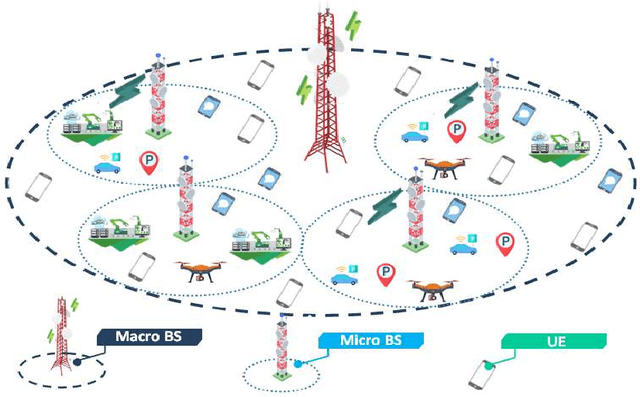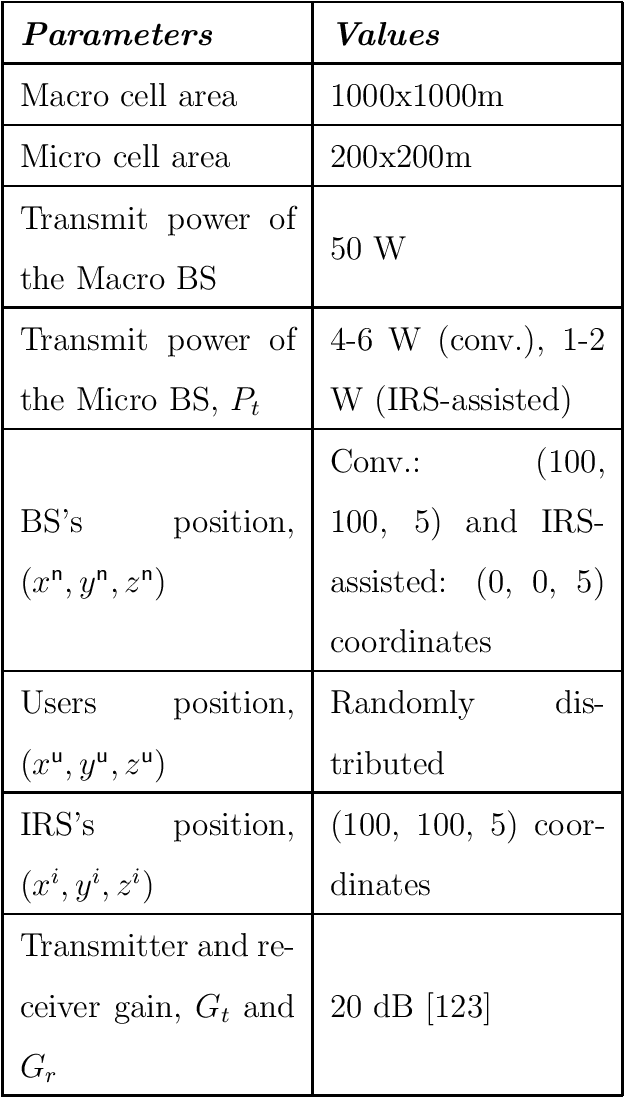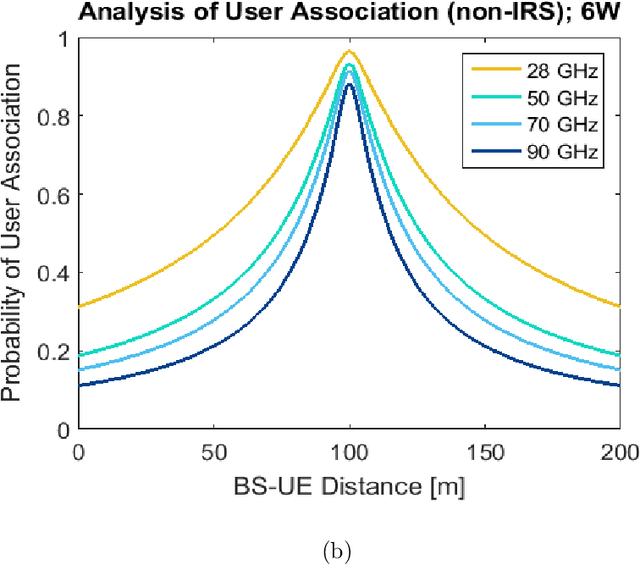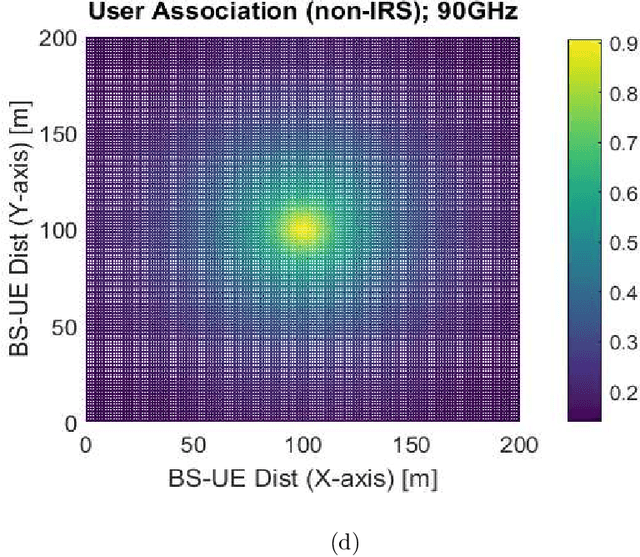Maximization of User Association Deploying IRS in 6G Networks
Paper and Code
Aug 12, 2022



Prospective mobile networks will be heterogeneous multi-tier networks, with different classes of base stations (BS) installed dependent on user demand. Multi-tier networks enable operators to enhance system capacity and coverage through flexible implementations. Intelligent reflecting surfaces (IRS) or reconfigurable intelligent surfaces (RIS) is a novel and disruptive technology that comprises a vast number of cost-efficient passive components, each of which can intelligently reflect the incident wave or signal with a reconfigurable phase shift. The objective of this work is to maximize the probability of user association for millimeter-wave (mmWave) carriers in a two-tier 6G network consisting of micro and macro cell tiers. Therefore, the work analyzed and compared the probability of user association for conventional and IRS-assisted micro base stations. The research derived that, the deployment of IRS in a micro cell significantly enhances or maximizes the probability of user association of the entire coverage region including the cell edge. Moreover, the deployment of IRS reduces the transmit power consumption of the micro base station which assures a notable energy efficiency.
 Add to Chrome
Add to Chrome Add to Firefox
Add to Firefox Add to Edge
Add to Edge